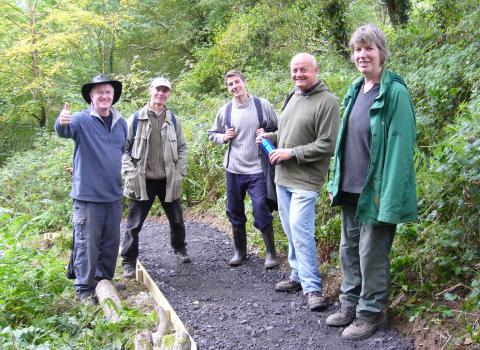The Wildlife Trust BCN was founded by volunteers devoted to protecting the wildlife and wild places of Bedfordshire, Cambridgeshire & Northamptonshire. We have always been an organisation guided by the voluntary principle. Today we have over 1,000 volunteers helping the Trust in all manner of ways and we could not operate without them. We cannot say thank you enough!

My Wild Life: Kevin Doyle - Dormouse Champion
Kevin Doyle has been surveying dormice in Brampton Wood for nearly 30 years and is excited to see the project enter a new phase
…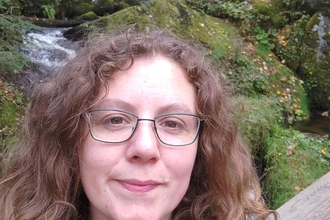
Meet the Volunteer - Ancient Woodland Inventory Volunteer, Lindsay Stronge
AWI Volunteer Lindsay Stronge tells us why she likes volunteering
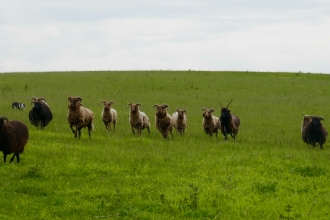
Meet the Volunteers: The Sheep Nuts of Pegsdon Hills
Meet three of our determined livestock volunteers keeping our Bedfordshire flock on the straight and narrow
Meet the Volunteer - Christine Newell
Christine Newell explains how she became a volunteer with our Trust and all the various projects she has become involved with and…
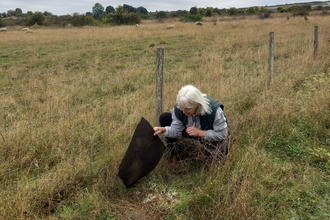
Meet the Volunteer - Sharon Stilliard
Sharon Stilliard has been volunteering with the Wildlife Trust for nearly 15 years and was a joint winner of the 2021 Oliver Rackham…
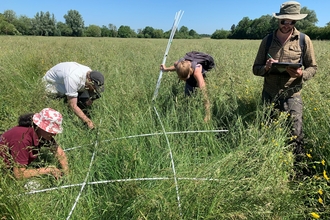
Meet the Volunteer - Jake Stone
Jake Stone, Placement Intern, tells us about his background and his current intern role in the Monitoring and Research Team at The…
Enjoy more stories from our wonderful volunteers:
John Showers
“After one chance remark, I found myself hooked on recording deer flies.”
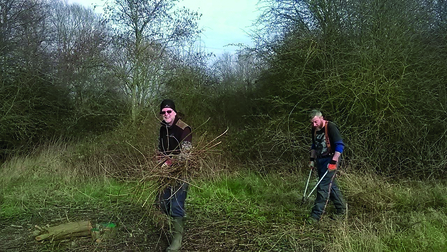
John Showers has volunteered for the Wildlife Trust for around 40 years. He always had an interest in wildlife, especially birds, with Titchmarsh and Pitsford being his haunts. Around 20 years ago, at Pitsford, John got hooked on recording flies, including hoverflies. For the past 15 years, he has been the Northants county recorder for diptera, the true flies.
"I especially enjoy finding rare species such as the two comb-horn craneflies in Northants, and I have loved being part of the WildSide project where I’ve been able to pass that knowledge on. Encouraging people to spot flies and running two training courses on their identification and recording was very rewarding.
Over the years I have seen the Trust develop into a much more professional organisation, with much better results for wildlife and for wildlife watchers. I am particularly delighted at the range of training courses that the Trust has instigated.
The habitat work parties run by the Trust provide good exercise and are great social occasions. Everyone is different and they allow for people to contribute as much or as little as they can, physically and mentally. You don’t need knowledge to get started, so there’s no need to be shy at getting involved when you have the chance.”
Richard Dowsett
“I have passed on what I have learnt and now see it applied in the Royal Parks.”
Richard Dowsett has been volunteering with the Wildlife Trust since the 1990s, first at Brampton Wood and then, mainly, at Hayley Wood. A talk on woodland ecology by Oliver Rackham, author of Hayley Wood: Its History and Ecology (1975), inspired him to join a work party.
"I find my volunteering gets me outside, learning, being useful, helping wildlife and making close friends. I can trace a direct route between the volunteering I’ve done and my job as Manager of Harrold-Odell Country Park.
My current focus is showing groups around this wonderful wood, including natural history societies and U3A Botany Groups. Other education groups have fallen away, partly as Rackham’s book fades from course curricula.
Hayley is the same wood it has always been, but the details do change. Songbird numbers have dropped, with marsh tit down and nightingales absent, reflecting national population trends. Deer might nibble more flowers, but it is still a spectacular bluebell wood.
Work parties aren’t for everyone but there are plenty of other options and you do get the bug. I have noticed that if a volunteer signs up for three months, I have them for a year. If they stay for two years, though, I’ve got them for life.”
Jessie Boucher
"I really believe the Trust ethos that nature is for all to enjoy, now and into the future. Today’s children will be the ones taking care for the environment, driven by their own wild experiences in their formative years."
Jessie Boucher started volunteering for the Great Fen around six years ago. She loves working with people and her care home visits include gentle quizzes, craft activities, poetry readings and seasonal activities that help evoke memories of nature from residents’ younger days. The Great Fen is all about extending the natural history and human heritage of the area for every generation. Jessie’s sessions are part of that.
"I love school visits to the Great Fen, and feedback from children, from pond dipping and sweep netting to plotting sightings on a trail map. On family activity days at Ramsey Heights, the children return, passing their knowledge and enthusiasm between the generations.
The benefits of my work in the Great Fen seem obvious to me, from mental health and physical fitness to increases in wildflowers and animals. My stand-out moments include discovering a complete fox skeleton, but mainly I just love the idea that youngsters can take something from their visits that they may hold dear for ever.
I feel that the perception of the Great Fen among locals and farmers has improved. Some initially felt the project looked backwards, but have now admitted that it has been good for them financially. I’m involved with over 20 events each year. Behind the scenes, that means turning my hand to anything that helps. We always need more people, and I really urge people to give it a go and not to be afraid of coming up with new ideas. For all generations’ sake, we need the best ideas we have available.”
Ellis Watts
“It helps me focus at school, and I wanted to give something back. Working with livestock is my dream.”
Ellis Watts, a 14-year-old schoolboy and future shepherd, helps look after our Barford Wood and Meadows reserve, part of the Rockingham Forest Living Landscape. Sheep go on the reserve after the hay cut, to keep the grass down and improve conditions for wildflowers, including great burnet and pignut, and butterflies such as orange-tip and four species of skippers. Ellis is part of Saints DPP rugby academy and plays for England under 18s touch team. He is looking to a future that includes livestock and rugby and, he hopes, living and working on a farm.
His ambitions started early. “By the time I was 11, I was already walking regularly on the reserve, so I asked what I could do to help out. I love the outdoors and find just being outside helps clear my mind and relieves stress. It helps me focus at school, and I wanted to give something back. Working with livestock has always been my dream.“
Now, I visit the reserve several times a week, spending up to an hour on my main check on the sheep, perhaps 200 of them. I am mostly checking on their health, such as watching for signs of lameness, but also making sure the fences are secure and that the sheep aren’t being worried by dogs or people. I wish people knew how to behave better around livestock. They need treating with the same respect as humans.“
I find myself checking the woodland on my usual walks as well – I think I am the main volunteer on the reserve! I mainly go with my dad, who works at the Althorp Estate, or with my girlfriend. Some of my friends get it; others don’t. I like to think of it as preserving the land for the future. I think more kids need to be taken out to see how the countryside works. It’s not enough just to tell them about it indoors. They need to connect to the natural world.”
Helen Spencer
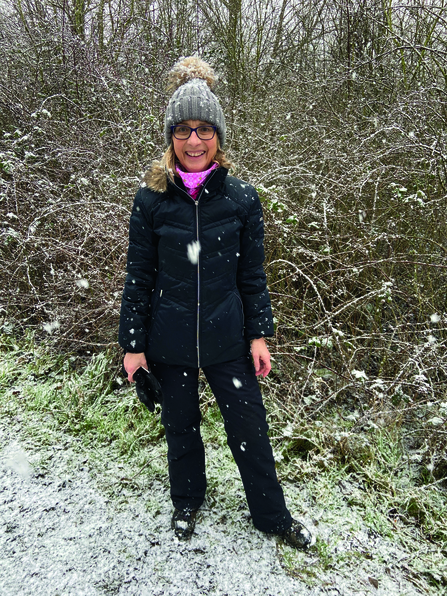
Helen Spencer, a retired GP, has lived near Summer Leys nature reserve, Northants, for many years. She joined the Trust with her family over 20 years ago at the reserve and has enjoyed walking there ever since. A year ago, during a snowy lockdown walk, an advert for volunteer shepherds called to her.
"Typically, I now spend an hour or so counting and observing the sheep every week that the 14 to 80 are on site. When there are only a few, you can really get to know them. I admit I got quite fond of Patrick and others of the 14 named for the Leeds United football squad!“
As a volunteer shepherd, the main job is to make sure the sheep are all there. They usually are. I know there is always a staff member – usually Tom – on the other end of the phone if needs be. I am also on the lookout for any sheep that have gone lame or got themselves stuck or have tangled brambles in their fleece. Mostly the sheep are docile and biddable.“
I have helped a little at shearing time, and hope to be able to help with lambing in due course, Covid permitting.“
Volunteering has really opened my eyes. It’s brilliant to get a behind-the-scenes view of the reserve and its management. I now understand far more about why the Trust look after Summer Leys the way it does. I feel I have become part of a community of volunteers. I am recognised as a shepherd by other visitors. I have learnt so much, not just about the sheep but also about the nesting birds, the butterflies, the orchids. I would definitely recommend it to others.“
I also feel that I would now have the confidence to encourage people to do the right thing by litter, open gates and other issues. I understand the consequences of poor behaviour more and care about its impact on the sheep and the wildlife.“
Being a volunteer shepherd has been a lovely way to give something back to a place I might have taken for granted.”
Meet more of our enthusiastic volunteer shepherds, the Pegsdon Sheep Nuts.

